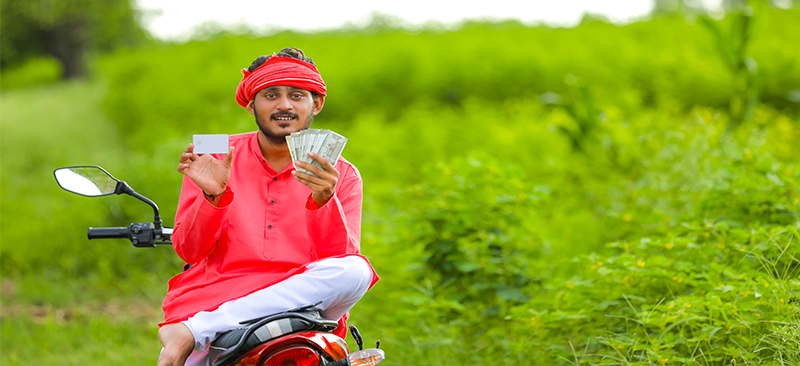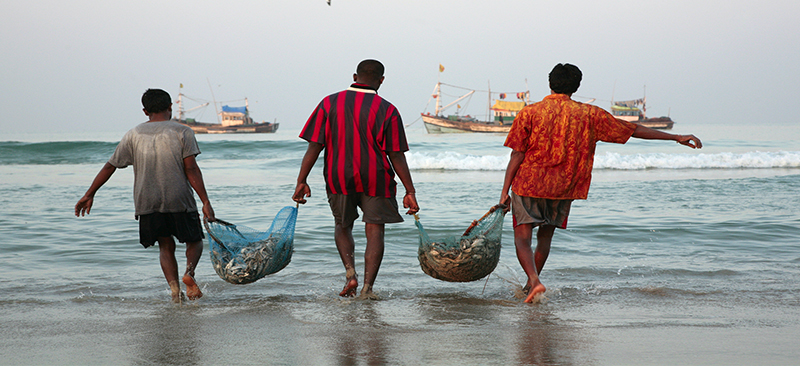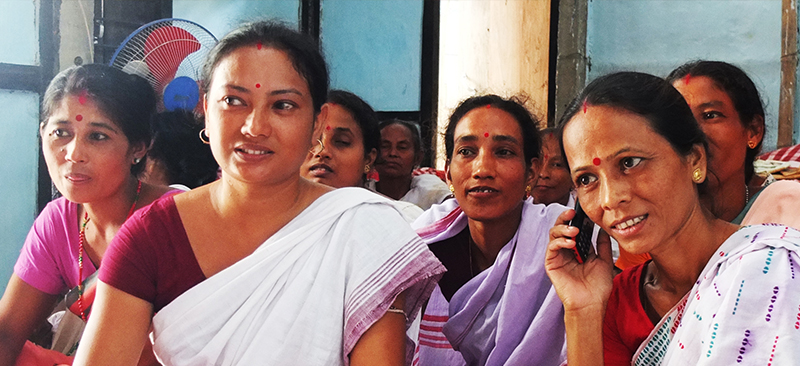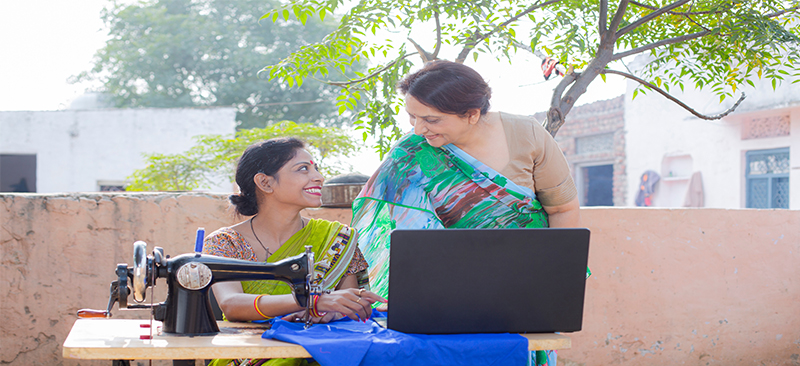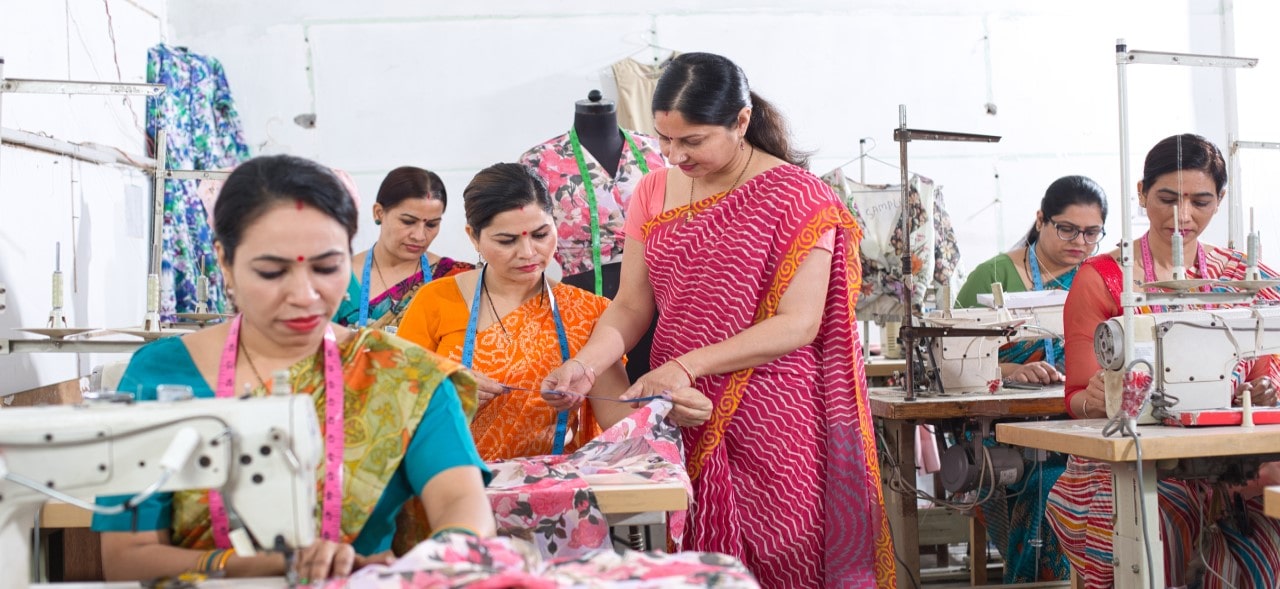The FinTech ecosystem in India continues to thrive with innovative products and solutions that cater to the bottom of the pyramid. The role of enablers in this space, especially start-ups, remains invisible—they develop disruptive products and provide the infrastructure necessary for innovative financial solutions to materialize and flourish. This video highlights how start-ups under the FI Lab have been transforming the ecosystem with new tech solutions. It also discusses the impact of these solutions on the low- and middle-income segment.
Numer8: From space to sea, solving for fisherfolk—numerically
This blog is about a startup under the Financial Inclusion (FI) Lab accelerator program’s fourth cohort. The Lab is supported by some of the largest philanthropic organizations across the world – Bill & Melinda Gates Foundation, J.P. Morgan, Michael & Susan Dell Foundation, MetLife Foundation, and Omidyar Network.
According to the World Wildlife Fund (WWF), 3 billion people worldwide rely on seafood for their dietary needs. Marine fisheries generate employment for millions of people across the globe. In India, the seafood industry employs about 5 million fisherfolk and laborers, who face several issues that remain unresolved for various reasons, as illustrated in the image below.
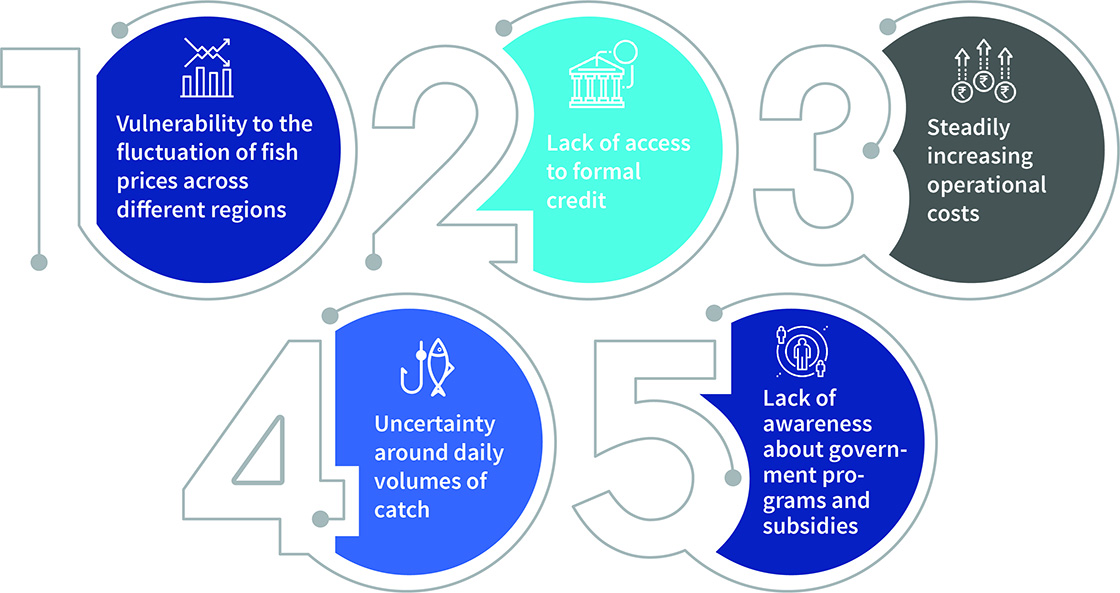
The resolution of these problems offers an opportunity to improve the lives of fisherfolk. However, only a few platforms are willing to build solutions for marine fisherfolk. One of these is Numer8, a startup that strives to analyze the problems fisherfolk face and uses its data analytics capabilities to develop scalable solutions for the sector.
The eureka moment
 Devleena Bhattacharjee, the founder and CEO of Numer8, has a background in data science. A serial entrepreneur who used to develop data solutions primarily for urban customers, Devleena was keen to use her skills to address more significant global issues, such as climate change, disaster recovery, and livelihood resilience.
Devleena Bhattacharjee, the founder and CEO of Numer8, has a background in data science. A serial entrepreneur who used to develop data solutions primarily for urban customers, Devleena was keen to use her skills to address more significant global issues, such as climate change, disaster recovery, and livelihood resilience.
Devleena met Nandhini Karthikeyan, the current CTO of Numer8, during a machine learning course. Their shared perspectives and passion for solving global issues helped them conceive Numer8.
Numer8 launched its operations in 2017. Its first product, “QResq,” was a geographic information system (GIS) application that collected data on natural disasters and provided a multidimensional outlook on the consequent geo-critical changes. While studying the effects of disasters like the Kerala floods of 2018 and cyclone Fani, the Numer8 team was shocked by the disproportionately colossal loss of life and property due to climate disasters.
Coastal disasters, in general, threaten to demolish the livelihood of families associated with marine fisheries. Climate Central further projects that India could face coastal floods every year by 2050. Cumulatively, such disasters would affect more than 36 million people. This frightening prediction was an eye-opener for the duo. They decided to invest all their time and resources in supporting the livelihood of marine fisherfolk. This investment led to their second product, the “Ofish” mobile app, which quickly gained prominence. “Ofish” provides a data-driven analysis of hyperlocal weather, sea tides, and fishing conditions to help fisherfolk with market linkages. The Numer8 team is now hard at work to build and integrate a portfolio of solutions to serve the fisherfolk holistically.
Numer8’s unique pitch
The Numer8 team conducted primary and secondary research to delve deeper into issues that marine fisherfolk face in India. They identified four significant challenges that, if addressed, hold the potential to improve the livelihoods of marine fisherfolk. The graphic below provides a snapshot of these issues.
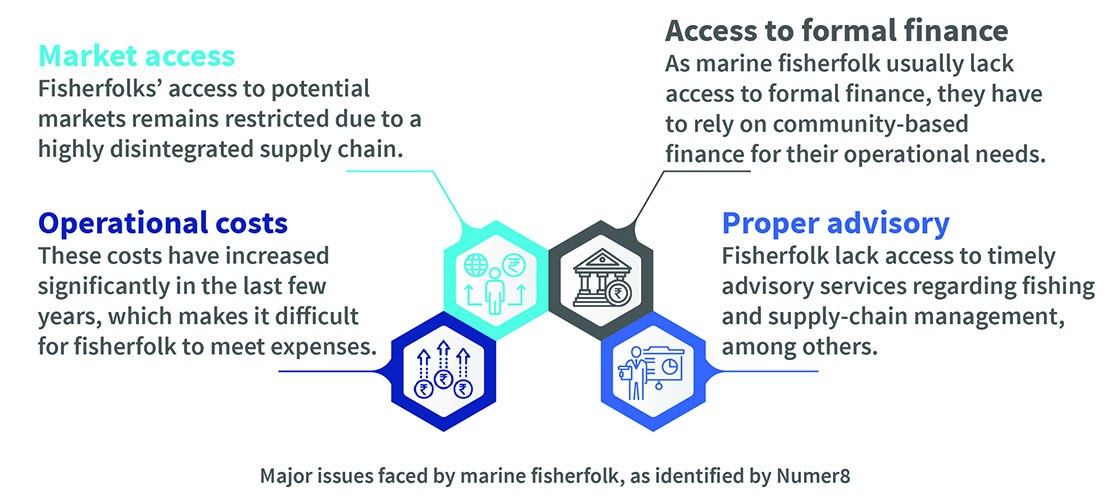
In 2018, Numer8 partnered with the National Aeronautics and Space Administration (NASA) and the European Space Agency under the Copernicus Master’s program. These partnerships helped the team to access geospatial data, especially for the Indian coastline, and offer timely and accurate results. These partnerships allow Numer8 to offer timely and accurate alerts on fishing and natural disasters, which was the initial focus of “Ofish.”
In 2019, the World Food Program (WFP) selected Numer8 as a part of its technology-based program on food security solutions organized in Sri Lanka. As a part of the program, Numer8 conducted a hunger management pilot and discovered that most digital food security solutions focus on agriculture or inland fisheries. The marine fisheries sector had a severe lack of technology-assisted global food security solutions. MSC estimates that India’s 5 million marine fisherfolk cumulatively generate an income of INR 322 billion (~USD 4.32 billion) annually. Numer8 decided to safeguard the income and livelihood of marine fisherfolk through data-driven insights to support supply-chain linkages and offer formal financial assistance and business advisory, among others. Besides helping fisherfolk improve their livelihood, Numer8 also seeks to operate at the ecosystem level and address critical sectorial issues, as outlined below.
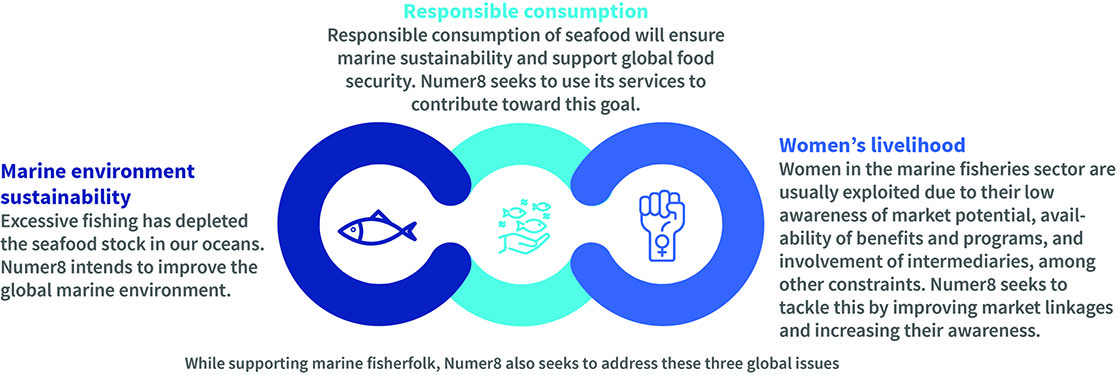
The impact of Numer8 on LMI fisherfolk
Numer8 helps low- and middle-income fisherfolk move toward profitable and sustainable fishing practices. To date, the startup’s “Ofish” product has onboarded and benefitted more than 2,000 fisherfolk, empowering them to improve their livelihoods.
During the COVID-19 pandemic, Numer8 offered advisory services for fisherfolk to increase their net income. It suggested ways to reduce operational costs and increase their sales margin.
The challenges
The image below summarizes the challenges Numer8 faced during the design of its products.
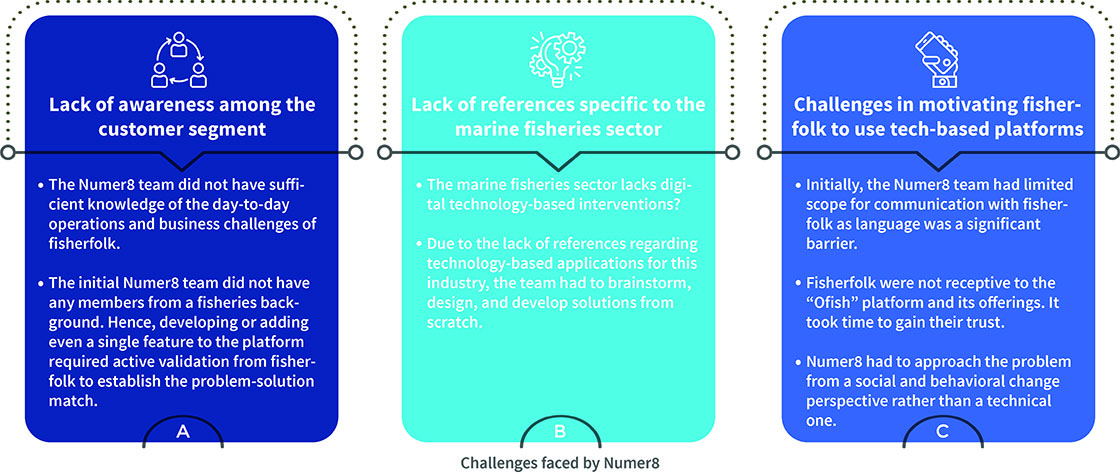
COVID-19: An unexpected catalyst
When the pandemic first struck, Numer8 had anticipated an impact on its operations. The team turned this adversity into opportunity—they devised and piloted new ideas, such as market linkage solutions for fisherfolk. The pilot sought to identify and form partnerships with forward and backward players in the supply chain like raw material suppliers, retailers, and customers. Devleena and her team took to the streets to sell fish to upgrade their approach to design thinking and understand the on-ground dynamics of the supply chain.
However, the second wave of COVID-19 dented the startup’s business revenues and obstructed its operations. Pandemic-induced lockdowns and travel restrictions led to a severe market disconnect. Despite these challenges, the team managed to bounce back and revive the business after the government eased restrictions on movement.
Support provided by the Financial Inclusion (FI) Lab
A collaborative effort of CIIE.CO and MSC, the FILab organized boot camps and diagnostic sessions and offered mentoring support and technical assistance to help Numer8 identify challenges and build robust strategies to overcome them. MSC’s help improved the overall user interface for “Ofish.”
MSC also helped Numer8 understand the financial needs and capabilities of fisherfolk, their socio-economic footprint, and other financial trends based on research across coastal Indian states. Based on this research, we designed a credit assessment framework that identifies the potential credit needs of fisherfolk based on basic information provided by them such as their past credit behavior, asset ownership, and alternate data, among other parameters. The framework assesses the creditability of fisherfolk based on. This assessment will enable Numer8 to extend formal credit to fisherfolk and other relevant players in the supply chain who lack proper documentation to substantiate their income and assets. This tool will provide another channel for Numer8 to scale up its business model.
The next steps
Numer8 plans to strengthen its geographical footprint through a hub-and-spoke model. It will continue to maintain a central workforce in India to develop “Ofish”. Simultaneously, local teams will customize and provide geography-specific services across different countries like the Philippines and Sri Lanka. The team has been conducting pilots in Bangladesh, Indonesia, and Papua New Guinea.
In the medium term, Numer8 will set up a digital marketplace to help fisherfolk connect with relevant players in the supply chain, such as input suppliers and retail buyers or wholesalers. The team believes that educating fisherfolk on the relevance of social and economic factors will drive the adoption of technology. Through community-driven workshops, Numer8 plans to provide financial education to fisherfolk, especially fisherwomen, on various market offerings and government plans and subsidies by partnering with relevant players. We hope that Numer8 achieves its objectives and creates its intended impact soon.
This blog post is part of a series that covers promising FinTechs that are making a difference to underserved communities. These startups receive support from the Financial Inclusion Lab accelerator program. The Lab is a part of CIIE.CO’s Bharat Inclusion Initiative and is co-powered by MSC. #TechForAll #BuildingForBharat
Awaaz.De: Mobile-based interventions for social change
This blog talks about a start-up called Awaaz.De, part of the Financial Inclusion Lab accelerator program, which is supported by some of the largest philanthropic organizations across the world – Bill & Melinda Gates Foundation, J.P. Morgan, Michael & Susan Dell Foundation, MetLife Foundation, and Omidyar Network.
Birth of an idea
A decade ago, Dr. Neil Patel decided to look beyond his home state of California and apply his Stanford University Ph.D. research to pressing problems in international development. His thesis won awards at world-class academic conferences, including the CHI conference, which focuses on innovations in interactive technology and brings technology for development research into mainstream academia.
Neil explored the design and deployment of Information and Communications Technologies (ICTs) to empower underserved populations. During his research, Neil developed a prototype of a mobile communications platform that cuts across language and literacy barriers to disseminate contextual and relevant content and collect data from farmers in Gujarat. The prototype also allowed users to post to a voice message board, which people could access through simple phone calls.
Dr. Tapan Parikh, Neil’s advisor at the University of California, Berkeley, nudged him to turn this idea into reality. Thus, Awaaz.De was born. The start-up’s current technology platform builds on more than 10 years of research (Patel et al., ICTD 2012) and a two-year Harvard RCT, which estimates that every USD 1 invested into its systems generates USD 10 in additional income for end-users.
The journey so far
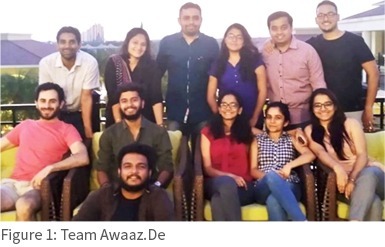 Awaaz.De is a FinTech enabler and social enterprise based in India that works to expand access to finance for the underbanked. Awaaz.De’s 360-degree Customer Connect sends personalized, interactive nudges and confirmations throughout the customer’s lifecycle. This drives market-proven results for loan collection and up-sell of products and empowers customers to report discrepancies and make informed financial decisions. Currently, Awaaz.De caters to 8-10 million customers each month, which primarily include low-income women from rural geographies. It also works on feature phones, which is the most commonly used phone among the low- and moderate-income (LMI) customers of Awaaz.De’s clients.
Awaaz.De is a FinTech enabler and social enterprise based in India that works to expand access to finance for the underbanked. Awaaz.De’s 360-degree Customer Connect sends personalized, interactive nudges and confirmations throughout the customer’s lifecycle. This drives market-proven results for loan collection and up-sell of products and empowers customers to report discrepancies and make informed financial decisions. Currently, Awaaz.De caters to 8-10 million customers each month, which primarily include low-income women from rural geographies. It also works on feature phones, which is the most commonly used phone among the low- and moderate-income (LMI) customers of Awaaz.De’s clients.
In its early years, Awaaz.De scaled its work in agriculture through partnerships with Digital Green and Precision Agriculture for Development. It worked with many development sector organizations in health, education, and financial inclusion. Awaaz.De raised seed funding from the Aavishkaar-Intellecap angel network, Sattva Capital, and IIM-A’s CIIE.CO. With funding for research and development from the Bill & Melinda Gates Foundation, Awaaz.De developed and launched its platform for the financial inclusion sector in 2016.
Since then, Awaaz.De has partnered with many leading financial institutions, including Axis Bank, Ujjivan Small Finance Bank, L&T Financial services, and Samasta Microfinance. These institutions rely on Awaaz.De’s platform to improve collections, drive growth, cut operating expenses, and accelerate digital transformation. Awaaz.De’s clients also use its SaaS platform to engage and acquire last-mile customers through mobile communication in more than 10 local languages.
The roadblocks
In 2020, the COVID-19 pandemic disrupted the core business operations of Awaaz.De and its partners. As businesses came to a grinding halt, the Awaaz.De team immediately shifted gears. They focused on identifying opportunities to use their platform to help partner institutions send critical communications to their customers at scale. These communications ranged from tips from public health experts to prevent COVID-19 to information on eligibility for government entitlements, such as benefits under PMGKY and the moratorium on EMI announced by the central bank. Awaaz.De bore the entire cost of these messages to facilitate people’s access to reliable information.
As the microfinance industry rebounded, Awaaz.De’s platform became more critical than ever. It enabled financial institutions to strengthen direct, digital connections with their customers across India, at a fraction of the cost—less than 95%—of telecalling. Despite its many challenges, the pandemic offered Awaaz.De and other innovative FinTech companies a once-in-a-generation opportunity to accelerate digital transformation.
Support from the FI lab
As a part of the Lab’s accelerator program, CIIE.CO and MSC supported Awaaz.De with a set of mentoring and technical assistance (TA) activities. Based on its call data, we helped the organization identify a correlation between call-response patterns and the tendency of customers to default on loan repayments.
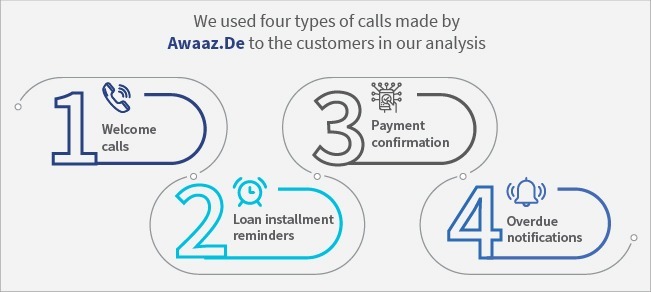
We conducted the following two levels of analysis on the dataset:
- The first level identified high-risk and low-risk customers based on their behavior on loan installment reminder calls using variables like average time spent on a call, calls missed, among others.
- The second level ascertained the relationship between branch locations and high- and low-value customers.
Support from the Lab helped Awaaz.de uncover new ways to provide more robust analytics and recommendations to its partners, such as banks, non-bank financial corporations, microfinance institutions, among others. This paved the way to deepen their engagements with its partners strategically.
Plans for the future
Awaaz.De continues to grow and diversify its customer base in India and abroad. It collaborates with like-minded organizations and uses their expertise and the immense potential of ICTs to create social impact.
The COVID-19 pandemic has accelerated the digital transformation of the financial inclusion sector. The crisis has also created a demand for innovative FinTech solutions to reduce dependence on field staff, use alternative data streams for underwriting and up-selling, and scale cashless transactions. With its existing reach that continues to grow and long-standing institutional partnerships, Awaaz.De seeks to meet this demand and play a pivotal role in accelerating digital transformation for its clients and end customers.
Awaaz.De has also been building a personalized and interactive platform through the micro-segmentation of its target audience, algorithmic push-messaging, and AI-powered chatbots to enhance user experience. It plans to explore opportunities to improve voice technology in speech analytics and recognition, integrating voice biometrics, speech-to-text, and text-to-speech to make the platform more secure and scalable. We are excited to watch its journey unfold in the next few months.
This blog post is part of a series that covers promising FinTechs that make a difference to underserved communities. These start-ups receive support from the Financial Inclusion Lab accelerator program. The Lab is a part of CIIE.CO’s Bharat Inclusion Initiative and is co-powered by MSC. #TechForAll, #BuildingForBharat
EasyPlan: Easing the middle-income segment into a more robust savings behavior
This blog looks at EasyPlan, a startup that was part of the Financial Inclusion Lab accelerator program, which receives support from some of the largest philanthropic organizations across the world—Bill & Melinda Gates Foundation, J.P. Morgan, Michael & Susan Dell Foundation, MetLife Foundation, and Omidyar Network
EasyPlan’s journey till now
Nihar, Siddhi, and Mayur are in their mid-twenties and reside in India’s urban locations. They fall under the middle-income segment (Figure 1) and prefer flexible saving options to achieve their short-term goals. Earlier, they could not save efficiently as most banks do not offer short-term saving instruments at desirable interest rates. Thus, they ended up spending their income on discretionary expenses. EasyPlan emerged as a solution with its offering of mutual fund-linked savings. It gives its customers the flexibility to save as much as possible, withdraw within a day’s notice, and earn higher returns than traditional savings products. These features encouraged Nihar, Siddhi, and Mayur to try EasyPlan’s simple and intuitive mobile application, and soon they started saving money. (See our previous blog for more on EasyPlan).
EasyPlan has reached a customer base of 200,000 in India. The startup has impacted the lives of its customers in several ways. As illustrated below, EasyPlan has helped Nihar, Siddhi, and Mayur fulfill their goals by helping them build regular saving habits and providing them accessible and flexible options to invest in.
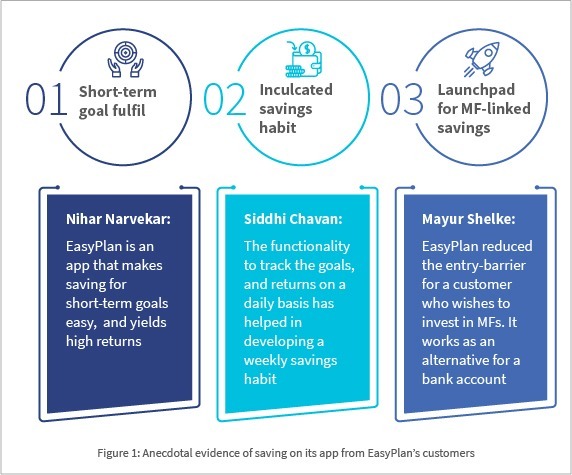
The COVID-19 pandemic altered the behavior of EasyPlan’s customers and redefined the startup’s business approach
As COVID-19 ravaged people’s lives, India witnessed a significant change in consumer sentiments. With economic instability and job losses leaving profound impacts on all strata of society, people from across income segments changed their financial behavior. While the GDP fell, people grew increasingly uncertain about future incomes and started to save whatever they could, fearing “rainy days” ahead. People’s saving levels as a share of GDP increased from 10% in the first quarter of FY 2019-20 (Jan-Mar, 2020) to 21% during the same period in FY 2020-21 (Apr-June).
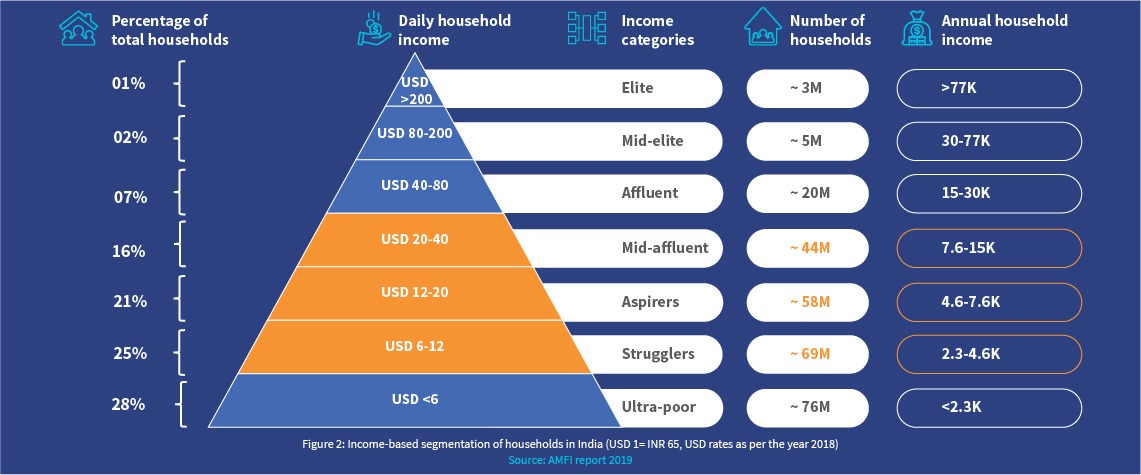
Likewise, people in the middle-income segments too saw the pandemic upending their lives. In India, the middle-income segment can be divided into three sub-segments—strugglers, aspirers, and the mid-affluent, as indicated in orange in Figure 2 above. Each sub-segment’s financial behavior is characterized by its financial health, demographic, socioeconomic, and behavioral factors. These differences play a crucial role in determining their perception, uptake, and preferences toward various savings and investment instruments.
In the wake of the pandemic, each sub-segment faced distinct sets of challenges that affected their livelihood (as depicted in Figure 2). Many of them saw their income decrease and faced a cash crunch during emergencies. EasyPlan observed similar changes for its customer base across these sub-segments. It analyzed the savings behavior of its existing base, which revealed that even though the income of people during the pandemic became irregular, the pandemic has strengthened savings behavior. This change in behavior also snowballed into EasyPan acquiring new customers from the middle-income segments. However, before doing so, it delved into understanding how the middle-income segment portrays diversity across the wider income range that builds this segment.
EasyPlan then moved forward with a much more nuanced understanding of the savings requirements, risk appetite, and needs of the various sub-segments, as highlighted in Figure 2 above. This understanding helped them target the new customers as per their needs and support them throughout the pandemic. As a result, EasyPlan could retain its existing customer base while onboarding a new set of customers by tapping into their savings needs.
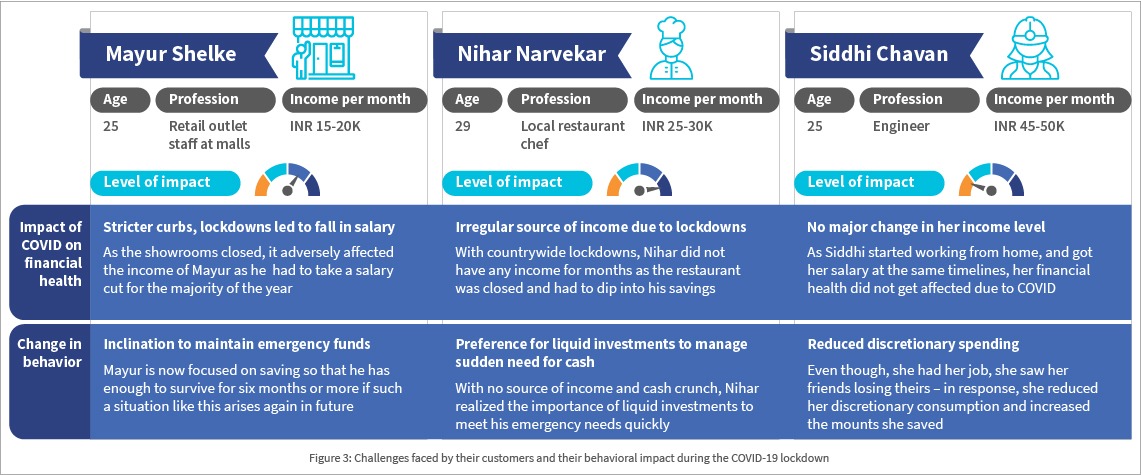
As seen in figure 3, the Lab investigated challenges that Mayur, Nihar, and Siddhi faced. The investigation identified factors that affected the behaviors of the sub-segments, as represented by the three personas, and influenced their perspectives toward different financial instruments. These factors include demography, socioeconomic situation, financial health, and goals. The Lab assessed various internal and external factors that play a vital role encouraging the adoption of mutual funds among customers, such as their level of financial literacy, preferences around liquidity, time horizon, risk resilience, complexity of products, and availability of the overall infrastructure.
With deeper insights based on market research and the Lab’s support, EasyPlan narrowed the target market to “Aspirers.” Accordingly, the EasyPlan team was tweaking its business strategy at the time of writing to stay ahead of the competition.
“This analysis helped us highlight the sub-segments that form a part of the bigger monolith of the middle-income segment in India and learn how these sub-segments portray varied needs in choosing savings instruments and possessing different levels of risk appetite. We also understood how their savings behavior changed during the pandemic.” — Manisha Pandita, co-founder, EasyPlan
Way forward
EasyPlan’s simple yet powerful business concept of goal-based savings for its target segment found resonance with a promising Indian neobank, Jupiter. Through collaboration and partnership, it envisions building a mobile banking application for India’s smartphone users. The platform will not act merely as a technology-empowered banking platform. Instead, it will serve as a finance app for users by giving a single view of their accounts across other banks along with their savings and spending patterns. EasyPlan’s savings solution will be an integral, and independent part of the platform—and it will complement Jupiter’s objective of acquiring new customers to use their savings products, along with its existing customer base which will get access to an advanced savings product.
This blog post is part of a series that covers promising FinTechs that have been making a difference to underserved communities. These startups receive support from the Financial Inclusion Lab accelerator program. The Lab is a part of CIIE.CO’s Bharat Inclusion Initiative, and co-powered by MSC. #TechForAll, #BuildingForBharat.
Frontier Markets: Building strong rural marketplaces
This blog talks about a startup called Frontier Markets, part of the Financial Inclusion Lab accelerator program, which is supported by some of the largest philanthropic organizations across the world – Bill & Melinda Gates Foundation, J.P. Morgan, Michael & Susan Dell Foundation, MetLife Foundation, and Omidyar Network.
The problem
Many energy enterprises produce innovative “green energy” products such as solar torches/lanterns but face barriers from a lack of awareness of, or trust in, the technology; and the absence of a localized distribution system. These factors impede the sale and delivery process to end-users, especially those in rural geographies. Frontier Markets identified these problems and converted this into an opportunity for last-mile distribution partnerships with enterprises with a strong market potential in rural India.
The solution
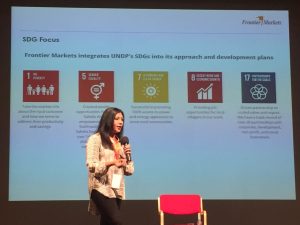 Frontier Markets digitalized while maintaining a human touch in its physical+digital or “phygital” delivery model. The startup’s business model is to onboard women entrepreneurs from rural areas, known as “Sahelis,” by partnering with local self-help groups (SHGs) and non-governmental organizations (NGOs). Frontier Markets then trains these Sahelis and gives them an app. The app is carefully designed to be intuitive and contains a catalog from which the customers can select the products they want. The Saheli records each selected item in the customer’s account and sends the aggregated demand from her verified customers to the Frontier Markets fulfillment team. This team collaborates with the relevant supplier and logistics teams to deliver the items to the customer’s doorstep with Saheli’s support.
Frontier Markets digitalized while maintaining a human touch in its physical+digital or “phygital” delivery model. The startup’s business model is to onboard women entrepreneurs from rural areas, known as “Sahelis,” by partnering with local self-help groups (SHGs) and non-governmental organizations (NGOs). Frontier Markets then trains these Sahelis and gives them an app. The app is carefully designed to be intuitive and contains a catalog from which the customers can select the products they want. The Saheli records each selected item in the customer’s account and sends the aggregated demand from her verified customers to the Frontier Markets fulfillment team. This team collaborates with the relevant supplier and logistics teams to deliver the items to the customer’s doorstep with Saheli’s support.
Thus, this business model allows Frontier Markets’ e-commerce platform to offer rural consumers a wide range of products and services. The startup’s gender-sensitive and data-driven approach create a sustainable way to achieve large-scale rural growth and provide dignified livelihood opportunities to rural women.
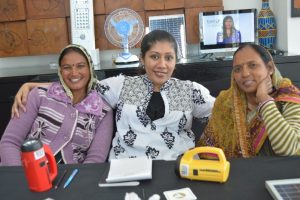
This approach also helps to achieve trusted and strong household connections in previously hard-to-reach rural areas. Such connections, in turn, open channels into the untapped rural market for distribution of global and local brands of consumer goods that were inaccessible to this market because of the high cost of distribution for these brands. The model employed by Frontier Markets has proved to be beneficial for product companies too. It uses a robust, regional language-based technology platform to equip the Sahelis to fulfill orders. This allows Frontier Markets to capture rich rural consumer data that provide valuable insights. These insights help the product companies grow, curate, and refine their product offerings—creating a data feedback loop that enables rural innovation at scale. Furthermore, product companies do not just serve the massive untapped rural consumer base. The insights allow them to offer new and curated product lines to their rural consumers.
The impact
The Sahelis have benefitted both socially and economically from Frontier Markets’ unique approach. Frontier Markets has developed a market for its low- and middle-income consumers—whose households experience volatile and unpredictable patterns of income, ranging between USD 2-10 per day. Frontier Markets has built a network of 10,000 rural entrepreneurs, who collectively generated a sales revenue of INR 250,000,000 (USD 3,362,215) since 2015. Frontier Markets has delivered more than a million products and services to the doorsteps of over 350,000 rural households within 48 hours of orders being placed.
Frontier Markets’ journey has seen its fair share of obstacles. In its early days (2011-2015), the startup had to contend with a lack of a suitable ecosystem in the country, logistics-related problems arising due to bad roads, lack of mobile connectivity, and unreliable electricity in rural areas. So initially, the organization had to work on a high-touch, tech-free model to reach rural customers and build trust.
Things changed in 2016 when the sudden policy move of demonetization of high-value currency notes. That gave a boost to digital payments and channels. Frontier Markets worked with digital services like Jio and Paytm to bridge the liquidity gaps faced by the startup’s consumers by giving credits and advances. It also partnered with local manufacturers to address shortcomings in supply chains.
The latest pivot
The rise of the COVID-19 pandemic, followed by a slew of lockdowns across the country, marked the next turning point for Frontier Markets. The organization had to pivot its product offerings away from prominently consumer durables and energy products. It now had to include essential grocery items, which were in great demand in the rural regions. The agile strategy of revamping its product base allowed Frontier Markets to sustain and grow despite unfavorable market conditions.
Support from the FI Lab
The FILab (CIIE.CO and MSC) has been involved closely with Frontier Markets as one of the startups selected for the Financial Inclusion Lab accelerator program.
Besides imparting workshops to refresh its skills on business strategy, product, and building robust organizations, among other areas, we supported Frontier Markets through mentoring and customized technical assistance in the use of existing data to deliver actionable business decisions. MSC’s technical assistance was along three lines:
- Saheli profiling: To identify the factors that contribute to their performance
- Market basket analysis (combination of products): To find which products can be grouped for cross- and up-selling
- Customer segmentation: To identify loyal customers
Plans for the future
What does the future hold for Frontier Markets? The organization seems poised for growth and intends to raise USD 6,000,000 in its next equity round. The founder believes the fundraising will help Frontier Markets strengthen its existing Saheli network by 1,300% and increase the number of villages it serves by 1,250%. The startup also expects to expand its geographical footprint from three to seven states in partnership with NGOs and SHGs.
Frontier Markets also plans to diversify its products and services. Through its current platform and consumer insights, it hopes to deliver more value-added services in finance and agri-savings, insurance, loans, agri-inputs, and tools, among others, for its consumer base. It has successfully managed the precarious task of adopting new technologies while retaining a human touch through its Sahelis and customer-centric teams.
This blog post is part of a series that covers promising FinTechs that are making a difference to underserved communities. These startups receive support from the Financial Inclusion Lab accelerator program. The Lab is a part of CIIE.CO’s Bharat Inclusion Initiative and is co-powered by MSC. #TechForAll, #BuildingForBharat
Women take the lead
India is a hotspot for start-ups. However, the country has only 297 women-led tech start-ups and just two women-led unicorns. Women entrepreneurs face more challenges in their entrepreneurial journey as compared to men. This video highlights how start-ups under the FI Lab continue to empower women and pave the way for gender inclusivity.
